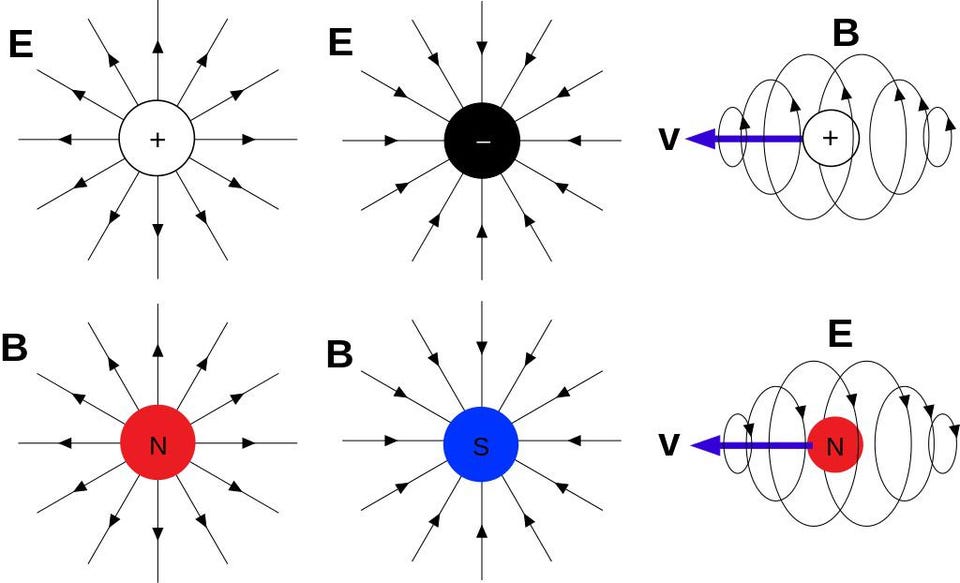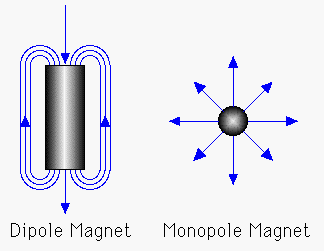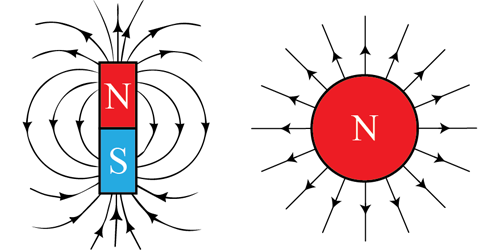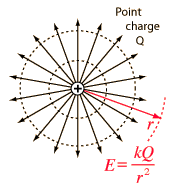Jed Quiaoit
AP Physics 2 🧲
61 resourcesSee Units
1️⃣ Monopole fields are fields that emanate from a single source and decay as the distance from the source increases.
Two examples of monopole fields are:
- Gravitational field of a spherical mass: The gravitational field of a spherical mass is a monopole field that is spherically symmetric and decreases with distance from the center of the mass. The strength of the field is proportional to the mass of the object that creates it and inversely proportional to the square of the distance from the object.
- Electrical field due to a single-point charge: The electrical field created by a point charge is another example of a monopole field. The electrical field is radially symmetric and decreases with distance from the point charge. The strength of the field is proportional to the charge of the object that creates it and inversely proportional to the square of the distance from the object.

Source: Forbes
2️⃣ Dipole fields, on the other hand, are fields that have two distinct sources, which are referred to as the north and south poles. The strength of a dipole field decreases with distance from the dipole, and the field can be decomposed into two parts: the near field and the far field (no need to memorize these for the exam).
Two examples of dipole fields are:
- Electric dipole field: The electric dipole field is created by two equal and opposite charges that are separated by a distance. The electric dipole field is strongest at the center of the two charges and decreases rapidly as the distance from the dipole increases.
- Magnetic field: The magnetic field is created by the motion of electric charges. A current-carrying wire or a moving charged particle can create a magnetic dipole field. Like the electric dipole field, the magnetic field is strongest at the center of the dipole and decreases rapidly as the distance from the dipole increases.

Source: Cybermax
Qualitative and Semiquantitative Arguments Towards Spatial Behaviors of Fields

Source: American Physics Society
The electric field around a system of electrically charged objects, including dipoles, can be found by vector addition of the electric fields produced by each individual object. 🏖️
For a dipole, the two charges produce fields of opposite direction, and the field lines curve around the dipole, as they are attracted to the positive charge and repelled by the negative charge. The net electric field at any point is the vector sum of the fields due to each charge.

Source: PhysicsGoEasy
In many cases, a charged object can be modeled as a point charge if it is small compared with the distances involved in the problem. In other cases, a larger object can be modeled as a large number of very small constituent particles, each of which is a point charge. The expression for the electric field due to a point charge, given by Coulomb's law, can be used to determine the electric field around a simple, highly symmetric distribution of point charges. 🤓

Source: Hyperphysics
For example, consider a system of two equal and opposite charges located on the x-axis at positions ±d from the origin. The electric field due to each charge points radially away from the charge, and the magnitudes of the fields are equal. Therefore, the net electric field at any point on the y-axis is zero, since the fields due to the two charges cancel.
However, at points along the x-axis, the fields due to the two charges add, producing a non-zero net electric field that points along the x-axis. 🤔
Browse Study Guides By Unit
💧Unit 1 – Fluids
🔥Unit 2 – Thermodynamics
⚡️Unit 3 – Electric Force, Field, & Potential
💡Unit 4 – Electric Circuits
🧲Unit 5 – Magnetism & Electromagnetic Induction
🔍Unit 6 – Geometric & Physical Optics
⚛️Unit 7 – Quantum, Atomic, & Nuclear Physics
📆Big Reviews: Finals & Exam Prep
📚Study Tools

Fiveable
Resources
© 2025 Fiveable Inc. All rights reserved.